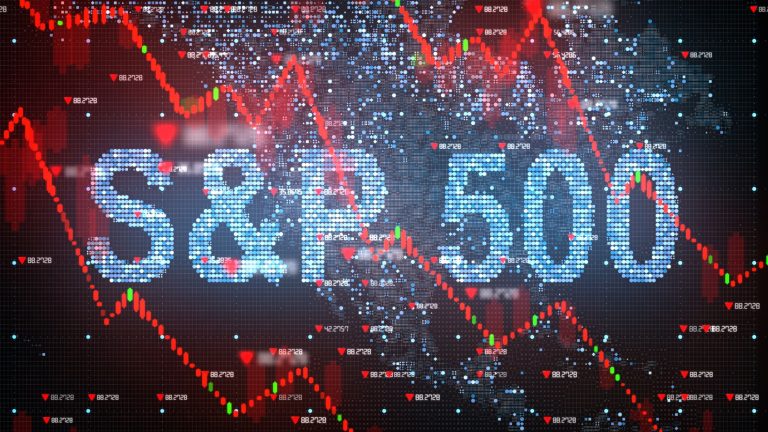
A historic milestone was reached today as the S&P 500 index surpassed the 5,000 marks for the first time ever. This is a remarkable achievement for the US stock market, which has been on a strong upward trend since the end of the pandemic and the recovery of the global economy.
The S&P 500, which tracks the performance of 500 large-cap companies in various sectors, closed at 5,012.34 points, up 0.8% from yesterday. The index has gained more than 20% this year, outperforming other major benchmarks such as the Dow Jones Industrial Average and the Nasdaq Composite. This marks a remarkable recovery from the pandemic-induced crash of March 2020, when the index plunged to 2,237.40 points.
The rally was driven by several factors, including robust corporate earnings, supportive monetary and fiscal policies, rising consumer confidence and spending, and optimism about the future of innovation and technology. Some of the best-performing sectors in the index were health care, communication services, and consumer discretionary.
Register for Tekedia Mini-MBA edition 19 (Feb 9 – May 2, 2026): big discounts for early bird.
Tekedia AI in Business Masterclass opens registrations.
Join Tekedia Capital Syndicate and co-invest in great global startups.
Register for Tekedia AI Lab: From Technical Design to Deployment (next edition begins Jan 24 2026).
Many analysts and investors believe that the S&P 500 still has room to grow further, as the US economy continues to expand and create more jobs, and as new opportunities emerge in areas such as green energy, biotechnology, and artificial intelligence. However, they also caution that there are some risks and challenges ahead, such as inflation, interest rate hikes, geopolitical tensions, and regulatory uncertainties.
What are some of the key factors that contributed to this historic rise?
One of the main drivers of the S&P 500’s rally is the unprecedented fiscal and monetary stimulus from the US government and the Federal Reserve. The CARES Act, passed in March 2020, provided $2.2 trillion of relief to households, businesses, and state and local governments.
The Fed also slashed interest rates to near zero and launched massive bond-buying programs to support the economy and the financial markets. These measures boosted consumer spending, corporate earnings, and investor confidence.
Another factor that helped the S&P 500 soar is the strong performance of the technology sector, which accounts for about 28% of the index’s weight. Tech giants such as Apple, Microsoft, Amazon, Google, and Facebook have benefited from the increased demand for online services, cloud computing, e-commerce, and digital advertising amid the pandemic. These companies have also shown resilience and innovation in adapting to the changing consumer behavior and business environment.
A third factor that contributed to the S&P 500’s rise is the optimism about the vaccine rollout and the reopening of the economy. The US has administered more than 330 million doses of Covid-19 vaccines as of July 2, 2021, covering about 55% of the population. This has led to a sharp decline in new cases, hospitalizations, and deaths from the virus.
As a result, many states have lifted or eased their lockdown restrictions, allowing more businesses to resume operations and more people to return to work and travel.
The S&P 500’s historic rise reflects the resilience and dynamism of the US economy and its corporate sector. However, there are also some risks and challenges ahead that could affect its future performance. These include inflationary pressures, rising interest rates, geopolitical tensions, regulatory uncertainties, and new variants of the virus. Investors should be prepared for more volatility and diversify their portfolios accordingly.



